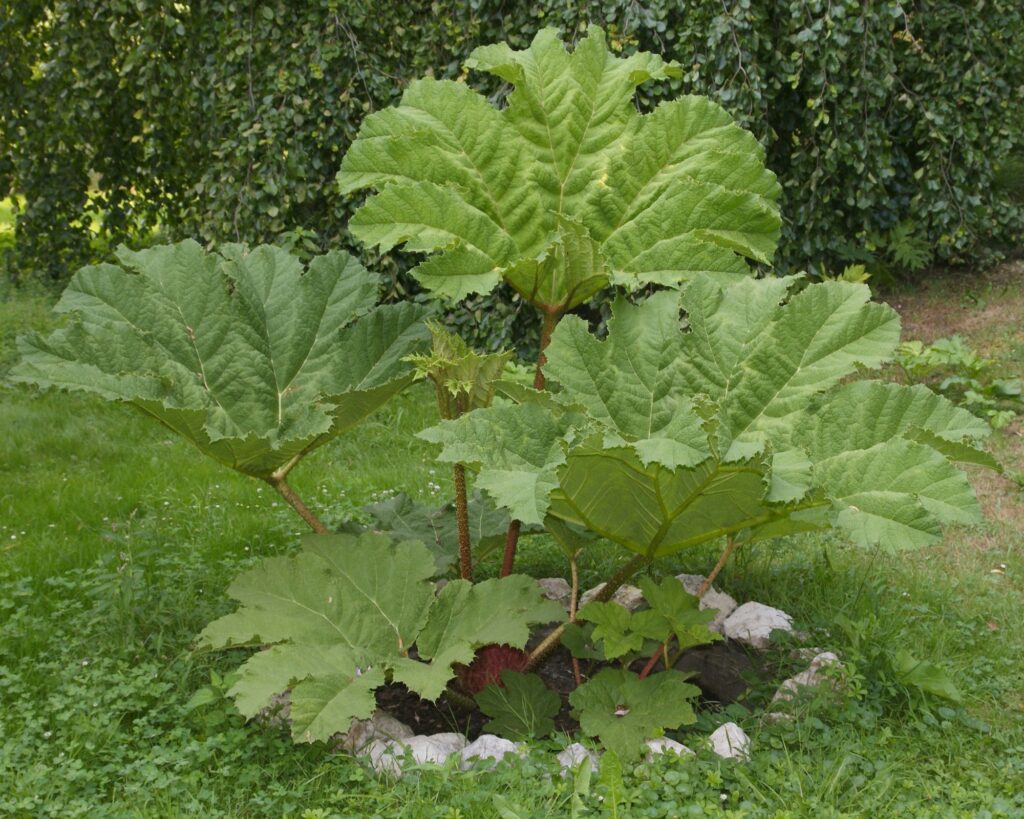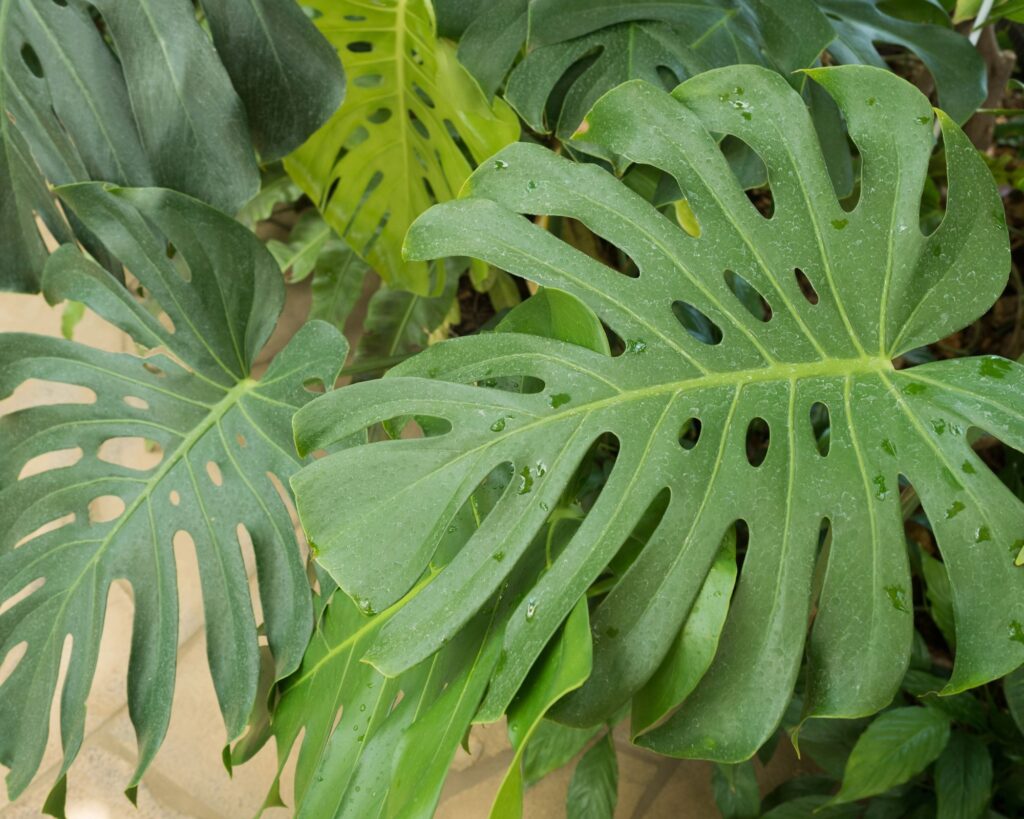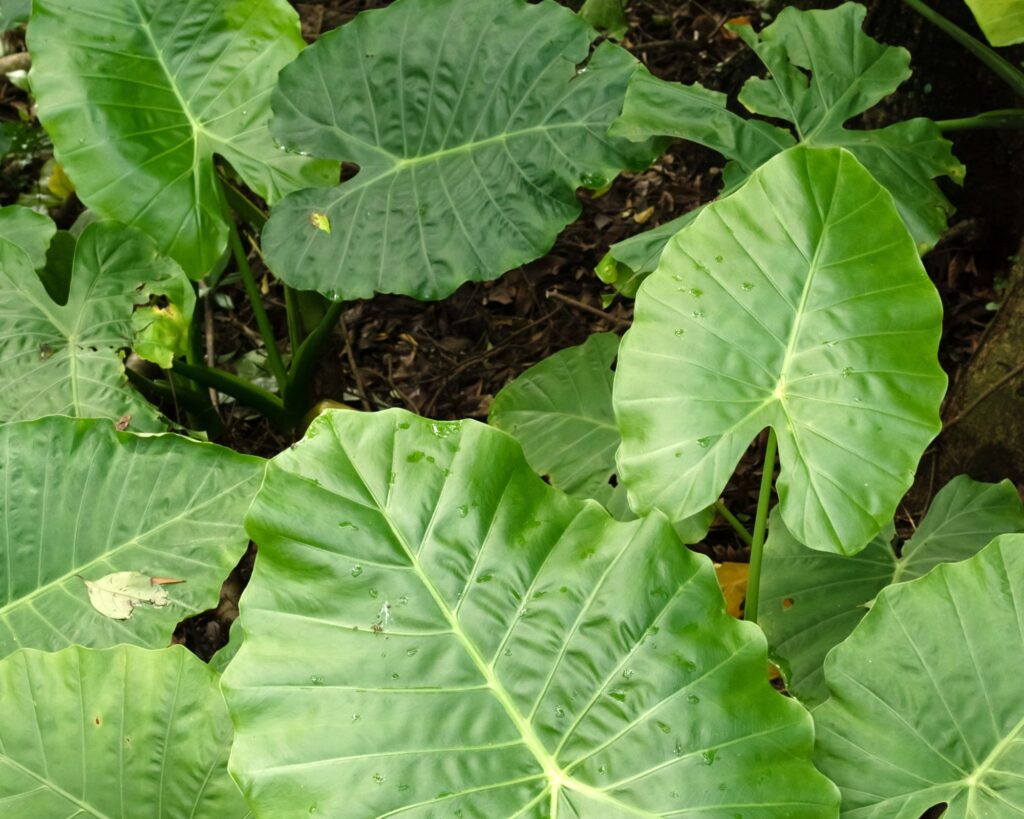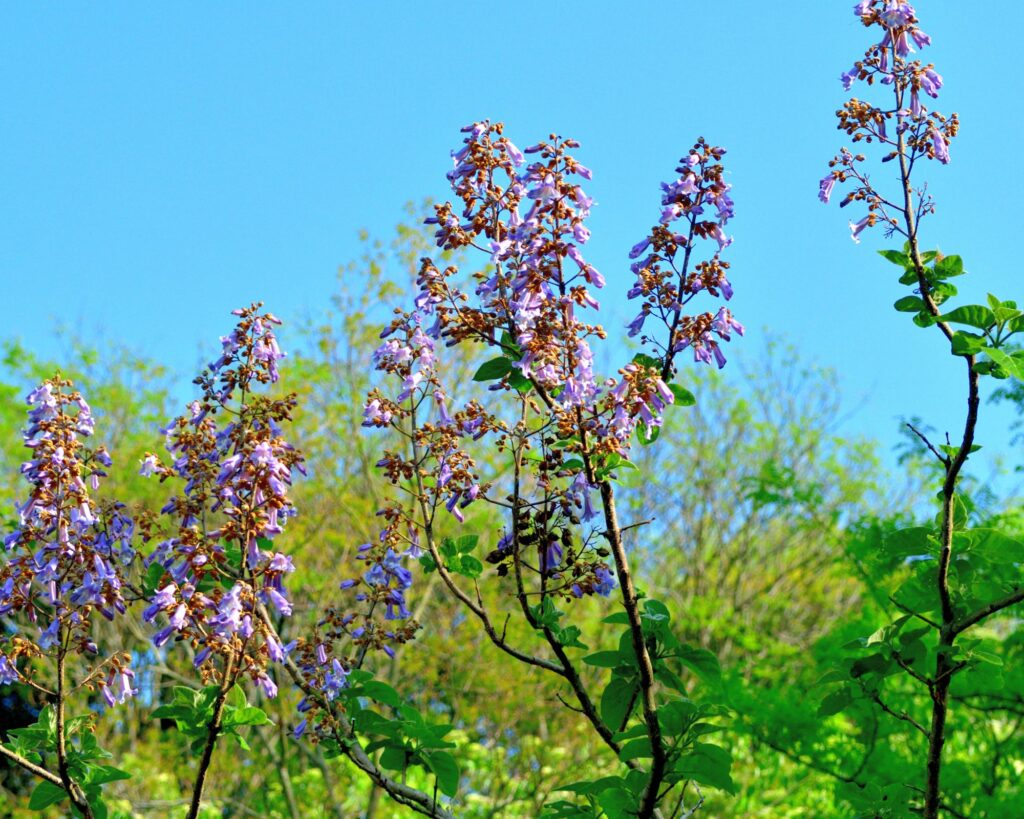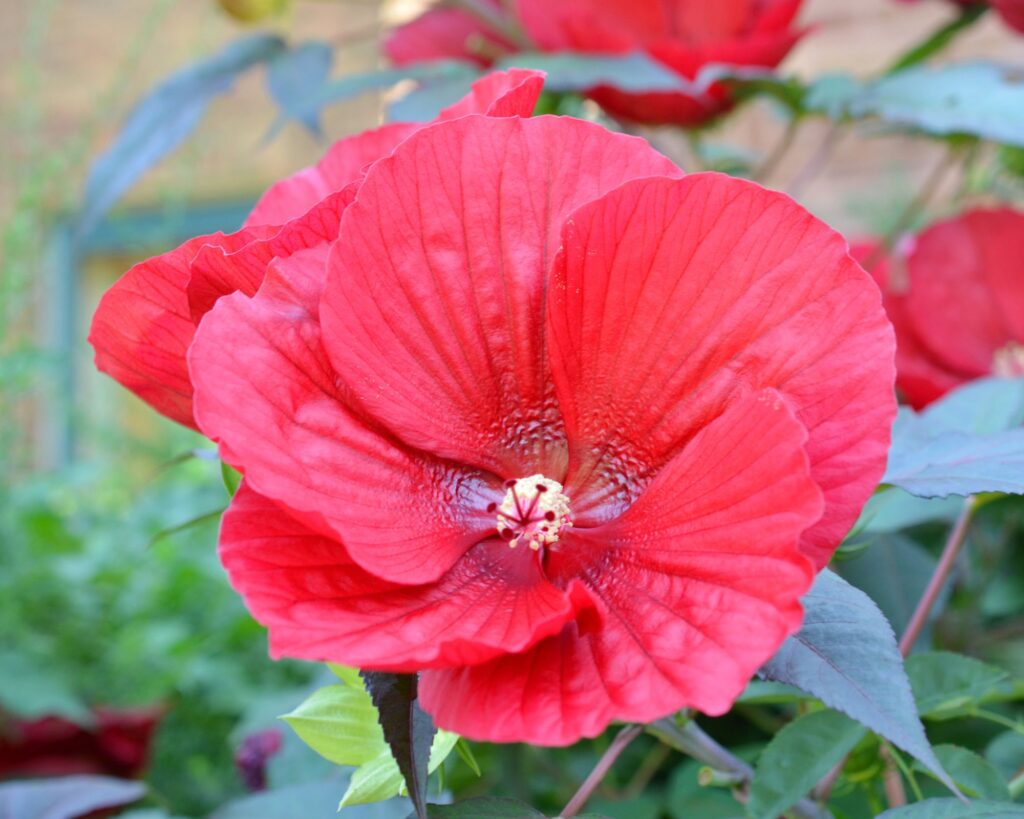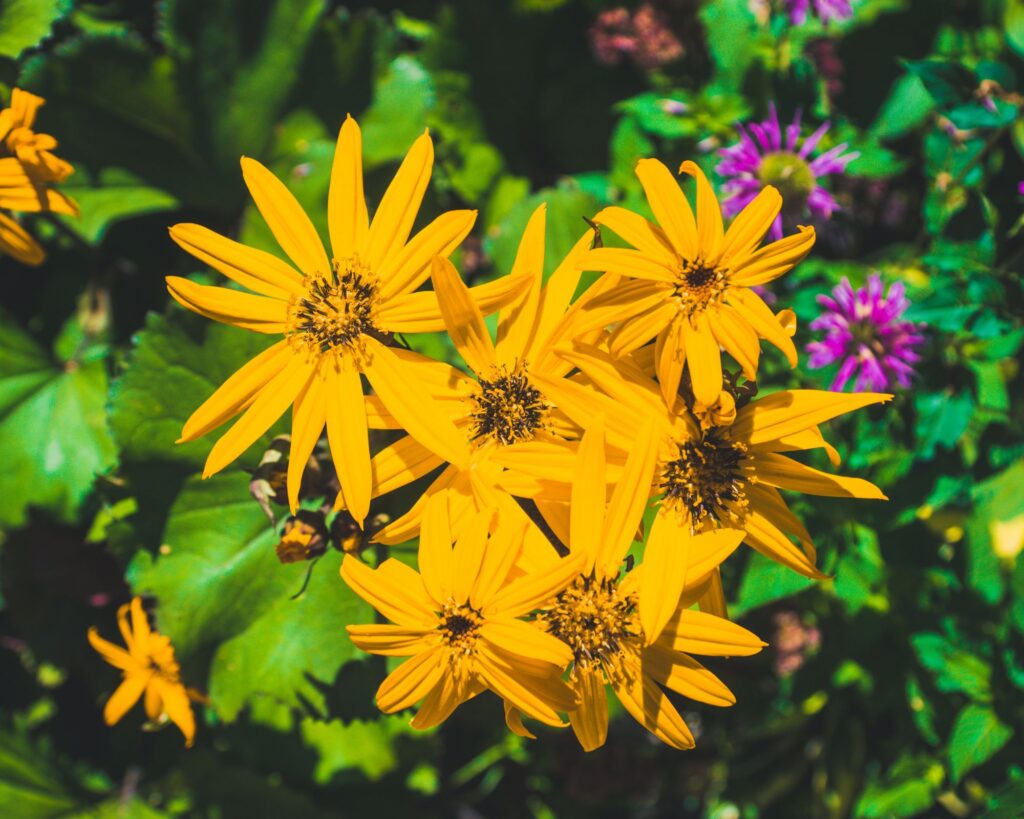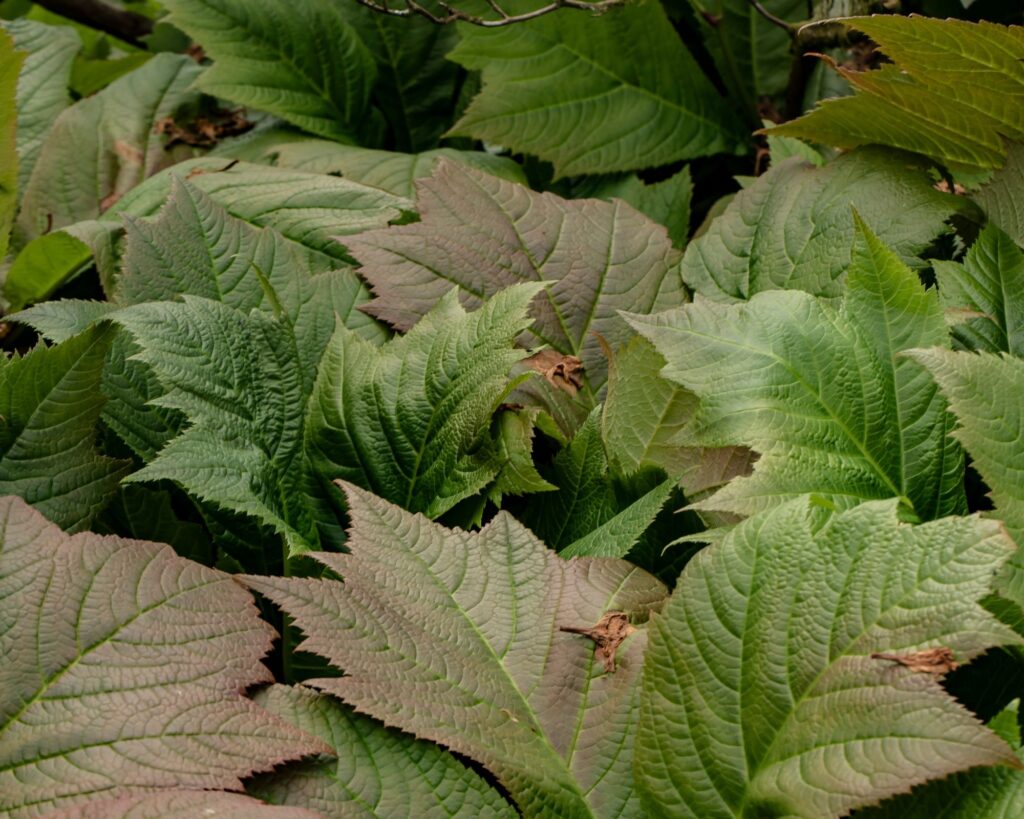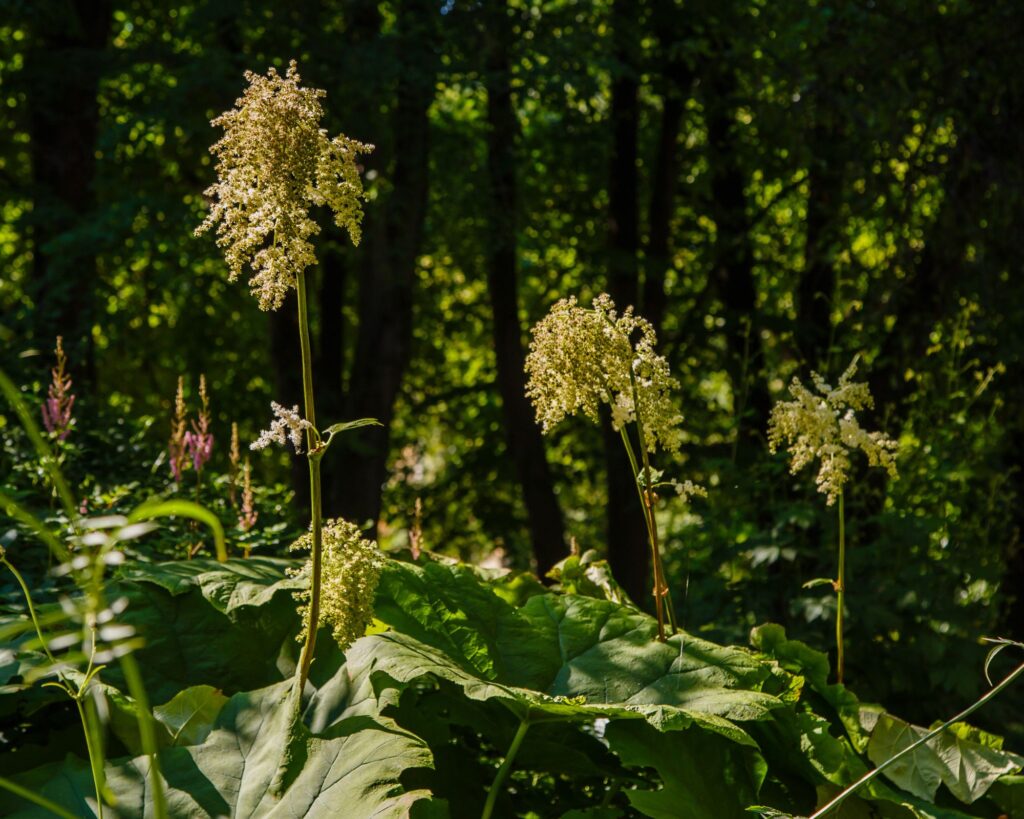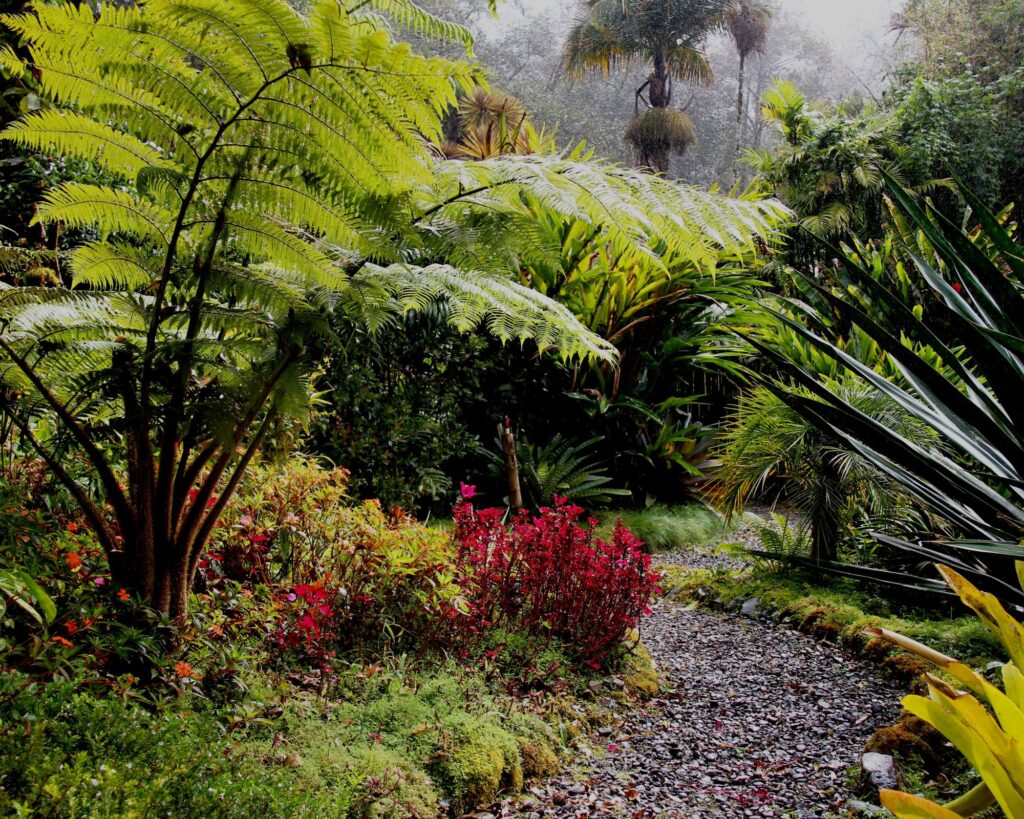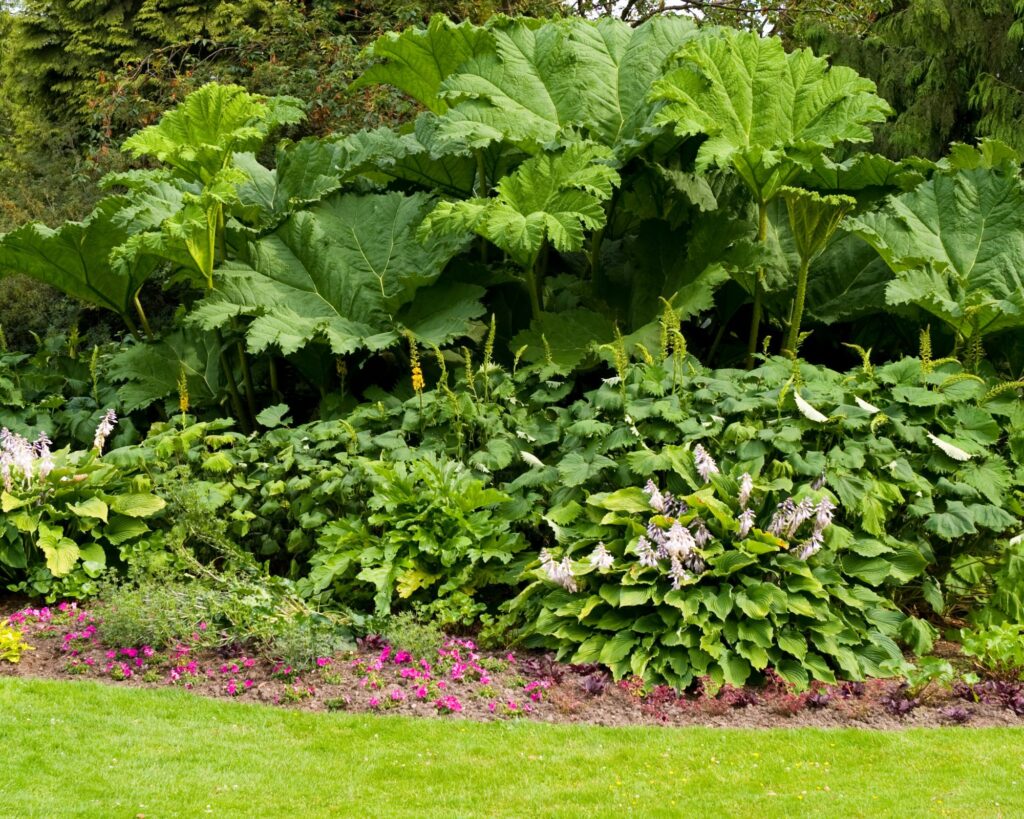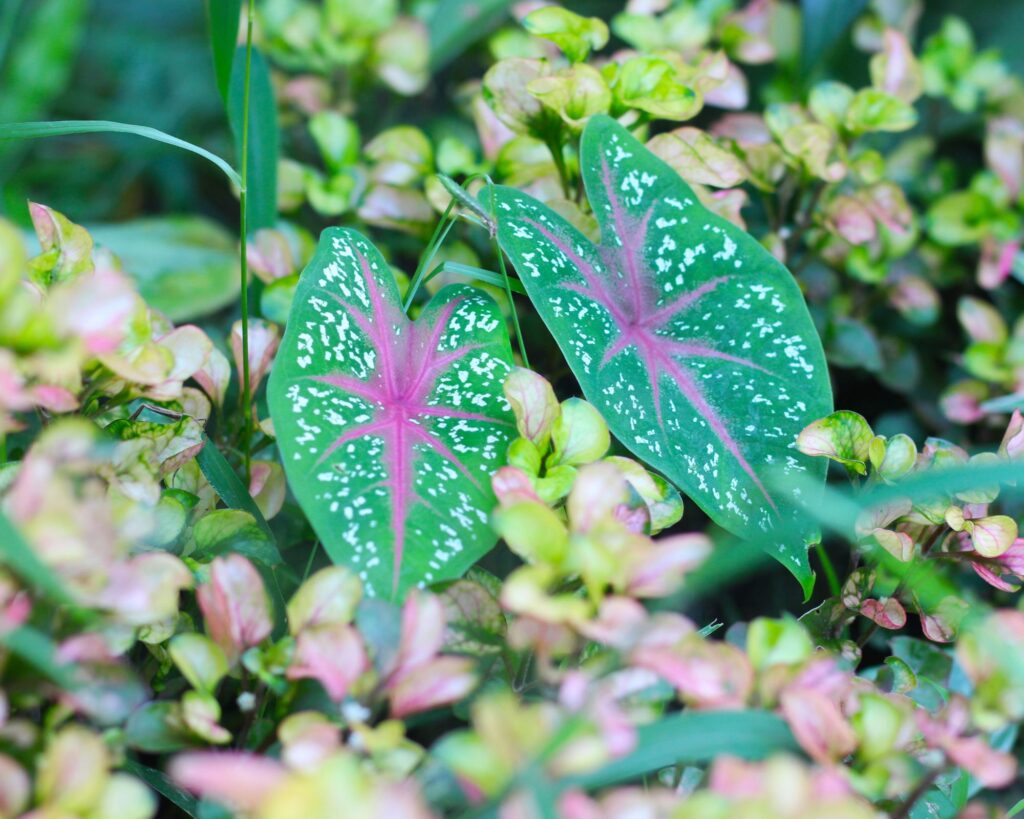Are you looking to transform your garden with some eye-catching foliage? You’ve come to the right place! Big leaf plants can provide a lush, tropical vibe to your outdoor space.
Whether you’re a seasoned gardener or just getting started, these stunning plants are sure to make a statement.
Imagine stepping into your garden and being surrounded by the grand, green leaves of plants like the Elephant Ear or the Giant Rhubarb. These plants not only add drama to your landscape but also create a cool, shaded oasis that’s perfect for relaxing.
Ready to discover your new favorite garden additions? Dive into this list of 15 stunning big leaf plants to grow outdoors and see which ones will fit perfectly in your outdoor sanctuary.
1. Gunnera Manicata (Giant Rhubarb)
Gunnera Manicata, often referred to as giant rhubarb, is known for its colossal leaves that can grow up to 8 feet across.
This plant is perfect for creating a jungle-like atmosphere in your garden. It thrives in consistently moist soil and partial shade, making it a great addition to areas near water features or damp corners of your yard.
2. Colocasia (Elephant Ears)
Colocasia, commonly known as elephant ears, is famous for its oversized, heart-shaped leaves. These leaves can span up to 3 feet long, adding a tropical flair to your garden.
Varieties like ‘Black Magic’ offer unique color options, ranging from deep green to nearly black. Colocasia loves rich, moist soil and does well in full to partial sun.
3. Hosta “Empress Wu”
Hostas are a favorite for their attractive foliage, and “Empress Wu” is one of the largest varieties available.
With leaves reaching up to 4 feet in diameter, this plant adds a lush, serene feel to shaded areas of your garden.
It’s perfect for creating a calming green backdrop or for filling large spaces with beautiful greenery.
4. Rheum Palmatum (Chinese Rhubarb)
Rheum Palmatum, or Chinese rhubarb, features strikingly large, deeply lobed leaves that can grow up to 3 feet across. Its bold presence and reddish-green foliage make it a focal point in any landscape.
This plant prefers moist, well-drained soil and partial shade, making it a stunning addition to your garden beds.
5. Fatsia Japonica (Japanese Aralia)
Fatsia Japonica is a versatile evergreen shrub with large, glossy leaves that can grow up to 16 inches across.
It thrives in partial to full shade and is an excellent choice for adding texture and greenery to shaded areas.
This plant also works well as a backdrop for smaller, flowering plants.
6. Monstera Deliciosa
Monstera Deliciosa, also known as the Swiss cheese plant, is popular for its large, perforated leaves.
Though often grown indoors, it can thrive outdoors in warmer climates.
This plant loves partial shade and well-drained soil, making it a fantastic addition to your garden’s tropical corners.
7. Alocasia Macrorrhiza (Giant Taro)
Alocasia Macrorrhiza, or giant taro, is another impressive plant with large, arrow-shaped leaves that can grow up to 3 feet long.
It prefers moist, well-drained soil and partial shade. This plant adds a striking, architectural element to your garden, especially when planted in groups.
8. Tetrapanax Papyrifer (Rice Paper Plant)
Tetrapanax Papyrifer is known for its massive, deeply lobed leaves that can reach up to 3 feet across.
This fast-growing plant can quickly create a lush, tropical look in your garden. It thrives in full sun to partial shade and well-drained soil.
9. Paulownia Tomentosa (Empress Tree)
Paulownia Tomentosa, or empress tree, is a fast-growing tree with large, heart-shaped leaves that can reach up to 2 feet across.
This tree is perfect for creating shade and adding height to your garden. It thrives in full sun and well-drained soil, making it a stunning addition to larger landscapes.
10. Catalpa Bignonioides (Southern Catalpa)
Catalpa Bignonioides, or Southern Catalpa, is known for its large, heart-shaped leaves and showy, trumpet-shaped flowers.
This tree adds both beauty and shade to your garden. It thrives in full sun to partial shade and is adaptable to various soil types.
11. Magnolia Grandiflora (Southern Magnolia)
Magnolia Grandiflora, or Southern Magnolia, is a classic choice for its large, glossy leaves and fragrant, white flowers.
This tree can grow quite large, making it an excellent choice for providing shade and creating a focal point in your garden. It prefers full sun to partial shade and well-drained soil.
12. Hibiscus Moscheutos (Hardy Hibiscus)
Hibiscus Moscheutos, or hardy hibiscus, features large, lobed leaves and stunning, dinner-plate-sized flowers.
This plant thrives in full sun and moist, well-drained soil. It’s perfect for adding a tropical touch to your garden with its bold foliage and vibrant blooms.
13. Ligularia Dentata (Leopard Plant)
Ligularia Dentata, or leopard plant, is known for its large, rounded leaves and bright yellow flowers.
This plant thrives in moist, shaded areas, making it an excellent choice for adding color and texture to darker corners of your garden.
14. Rodgersia
Rodgersia is a herbaceous perennial with large, textured leaves that resemble those of a horse chestnut tree.
It thrives in partial shade and moist, well-drained soil. Rodgersia adds a lush, woodland feel to your garden, especially when planted alongside other shade-loving plants.
15. Astilboides Tabularis
Astilboides Tabularis is a unique plant with large, round leaves that can grow up to 2 feet across.
It prefers partial shade and moist, well-drained soil. This plant adds a dramatic, tropical look to your garden and works well in water gardens or shaded borders.
Aesthetic Appeal
Big leaf plants elevate the charm of any garden. Their large, vibrant leaves create a lush, tropical vibe. Species like elephant ears, rubber plants, and monsteras are especially striking.
These plants often have unique textures and colors. This variability adds depth and visual interest to your landscape design. By mixing different species of big-leaf plants, you can create engaging focal points.
Furthermore, big leaf plants can serve as natural dividers or backgrounds. This helps in structuring your garden and providing privacy.
Shade and Cooling Effects
Big leaf plants offer practical advantages. One key benefit is their ability to provide natural shade. By planting large-leaf trees or shrubs, you can reduce the temperature of your garden or outdoor space.
This natural shading can help cool nearby areas significantly. It allows you to enjoy your garden during hot summer days. Additionally, it can decrease energy use by reducing the need for artificial cooling.
These plants also improve air quality and create a more comfortable outdoor environment. Sitting under the large leaves can feel like being in a natural canopy, offering a refreshing retreat.
Environmental Impact
Big leaf plants help with soil erosion control. Their extensive root systems stabilize the soil, preventing it from washing away during heavy rains. This supports healthy soil and contributes to a sustainable gardening practice.
Big leaf plants contribute positively to the environment. They are excellent for absorbing carbon dioxide and releasing oxygen. This process helps in mitigating climate change and improves air quality.
Large leaves also offer a habitat for various wildlife. Birds, insects, and small animals often find shelter among these plants. This promotes biodiversity in your garden.
Creating Focal Points
Strategically planting big leaf plants can enhance your garden’s aesthetics. These plants can serve as focal points and partner well with other plants to create a balanced garden layout.
Big leaf plants naturally draw attention. Elephant ears (Colocasia) and Gunnera manicata are perfect for creating a central highlight in your garden.
Place these plants in prominent areas where you want to focus attention, like the center of a garden bed or near a seating area. Using bold-leafed plants as a backdrop to smaller, colorful flowers can create contrast and depth.
For a dramatic entryway, plant Monstera deliciosa on either side of a garden path. This gives your entrance a lush, tropical feel, making your garden inviting from the start.
Companion Planting
When planning for companion plants, consider those with smaller leaves to contrast with your big leaf options. Hostas and Ferns work well together, balancing large and small foliage.
Pairing big leaf plants with blooming species like Hydrangeas can add color and texture. Caladiums are a great addition, offering vibrant leaves that complement the greenery of large-leaf plants.
Spacing is important. Ensure there’s enough room for each plant to grow without overshadowing its neighbors. This creates a harmonious garden that thrives together.
Incorporating big leaf plants into your garden is a surefire way to create a lush, tropical oasis that is both visually striking and environmentally beneficial.
These plants not only add drama and elegance with their grand, vibrant foliage, but they also provide essential shade, improve air quality, and contribute to a thriving, biodiverse ecosystem.
Whether you’re designing focal points, creating a cooling canopy, or enhancing your garden’s overall aesthetic, big leaf plants offer endless possibilities.
By carefully selecting and positioning these stunning plants, you can transform your outdoor space into a serene, green sanctuary that will be the envy of all who visit.
So, get ready to dig in and discover the beauty and benefits of big leaf plants in your garden!

